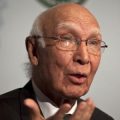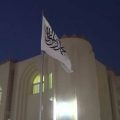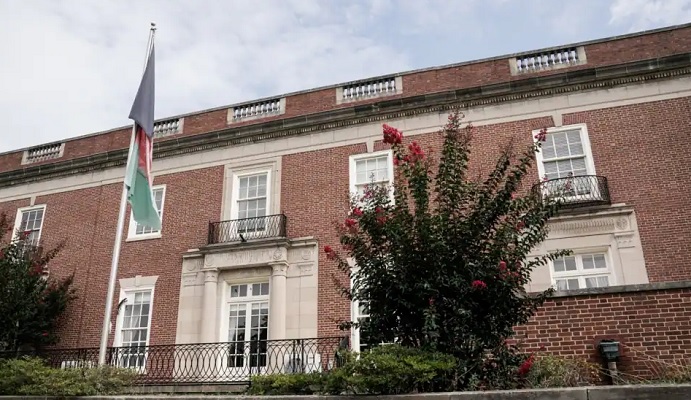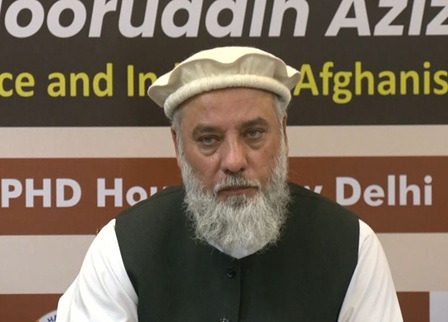
Ehsan Azari Stanizai
The Taliban are back in full control of Afghanistan after being driven from power by the American-led invasion of the country in 2001. As a prima facie case, the Taliban is an ideologically driven radical religious group. Despite their show of change, the fogs of uncertainty hover over what path they will follow for the future of Afghanistan. The itinerary of the movement evinces that any attempt to isolate or disengage the Taliban will be bound to a cataclysmic failure.
The spectacular free-fall of the Afghan government iter
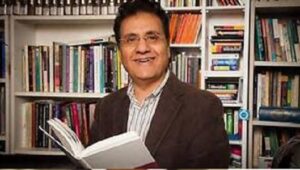
ates a tell-tale historical pattern of upheavals in Afghan history. In October 1929, for example, bandits captured Kabul and ruled the country for nine months. Understanding their sartorial wretchedness, the bandits’ leaders entered the royal palace. They rushed to wear the European dresses of the royals without knowing which garment was for man or woman. The jubilant bandits looked like a bunch of clownish caricatures to the astound onlookers.
Against all odds, the Taliban ideology is fundamentally far different from the traditional ethos of the Afghan tribal warriors—a synthesis of religious fanaticism and Afghan nationalism—in the 19th century. From the same Afghan tribes as the Taliban, Sayed Jamaluddin Afghani had an entirely different vision of Islam and Western liberal democracy. Called in Europe, the Martin Luther of Islam, Afghani was an innovator of modernization and reformation in Islam. He lived in 1884 for a while in Paris and London. So impressed by the everyday life there, he used to say that “There is Islam in Europe but no Muslim, although, in the East, there are Muslims just no Islam.” Ernest Renan and other Western intellectuals listened to Afghani’s ideas about the modernization of Islam with interests. I do not doubt that even the Taliban leaders do not have a piece of rudimentary knowledge about their own great sage and his teaching.
The Taliban’s proselytized ideology stemmed from a devious outside influence from the Pakistan military and its cleric lackeys with a compulsive ambition and purpose across Afghan politics. More than 36 thousand State-controlled religious madrassas (Islamic seminaries) in northern and western parts of Pakistan functions as the breeding ground for the Taliban since the 1990s. The clerics of the madrassa work as spies for the feared Pakistani military intelligence, ISI. They vigorously brainwash the young students from the Afghan majority Pashtun community into believing in a violent medieval Islamic ideology. They teach that Afghan nationalism, music, women’s freedom, and all Westerners are enemies of Islam. The founder of the Taliban, Mullah Omar, once said, “Love of one’s country is synonymous with idol-worshipping.” After the overtaking of Afghanistan, the first battle of the Taliban with their people was over the old Afghan national banner, music, and women’s rights.
Like communist propaganda used by the old Soviet Union as a vehicle for state power and security, Pakistan has promoted perverted religious extremism. Pakistan’s military uses the Taliban as a double-edged sword for state power, national security, and geopolitical priorities. About 30 million Pashtuns of Afghan origin live in Pakistan. Their land was annexed by Pakistan in 1947 coercively, under the false pretext that Pakistan is the sole heir to the British Raj in South Asia. The Pashtuns have a deep-seated feeling for outright independence like Baluchis in Pakistan. They never accepted fake Pakistani identity. They call themselves proud Afghans and thousands of them were killed and prosecuted by Pakistan’s military since the creation of this country for advocating their right to self-rule. Pakistan supplied broad support to the Taliban to counterbalance this trend, hoping to suppress their cousins in Pakistan. This backing also explains Pakistan’s duplicitous role in the war against terror since 2001 by killing the Taliban by Americans and killing Americans by the Taliban.
“We are custodians of Taliban leaders. We have taken care of them for a long time. They have shelter, education, and home in Pakistan,” Mr. Shaikh Rashid, the interior minister of Pakistan, showed his chutzpah last week. Besides the Taliban, the Pakistani military nurtures tens of terrorist outfits in the country. According to a new United Nations report, the leaders of ISIS, known as ISIS-K, entered Afghanistan via Pakistan. The terrorist group massacred 13 US troops and 170 Afghan civilians in Kabul Airport’s suicide attack on Thursday, 26 August. This whole strategy shows credenda in terms of which Pakistan motivates and legitimizes the above extremist Islamic ideology.
Perpetual war in Afghanistan in the 19th century was popularized as a Great Game by Rudyard Kipling the West and labelled as a ‘tournament of shadows’ in Tsarist Russia. If the West walks away from Afghanistan, the tallest and darkest shadows in the game will belong to Pakistani generals and their masters, Chinese communist leaders.
Nevertheless, The West still has enormous leverage over the Taliban. The Afghan economy is contingent on foreign aid. The flow of financial aid to the Taliban must be contingent on the unmistakable moderation of the Taliban and their acting as a responsible member of the international community. The history of the ideologies in the twentieth century bears evidence that those who manipulated false consciousness on others fell victim to it.
Dr Ehsan Azari Stanzaic is a lecturer in Literary Studies at the National Institute of Dramatic Arts (NIDA)
